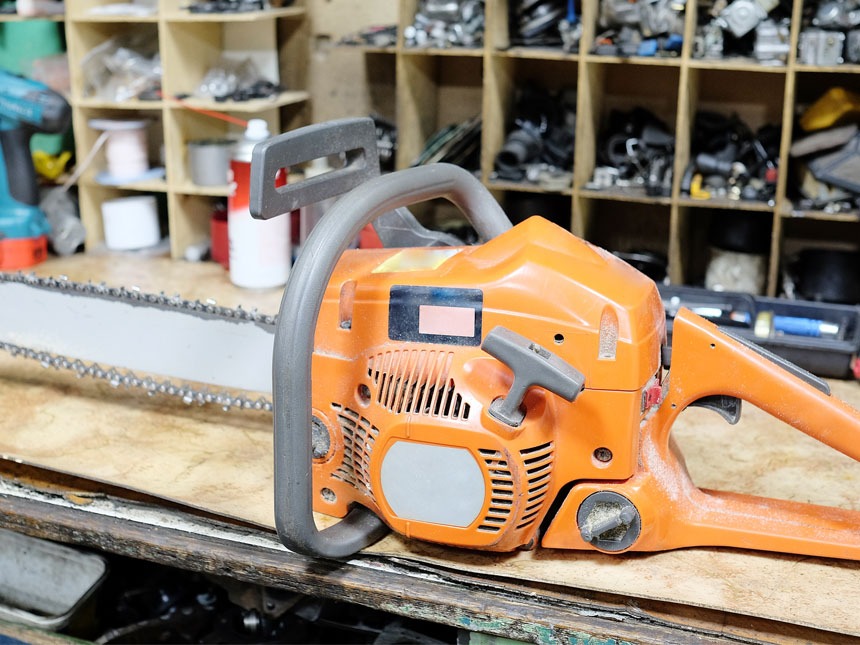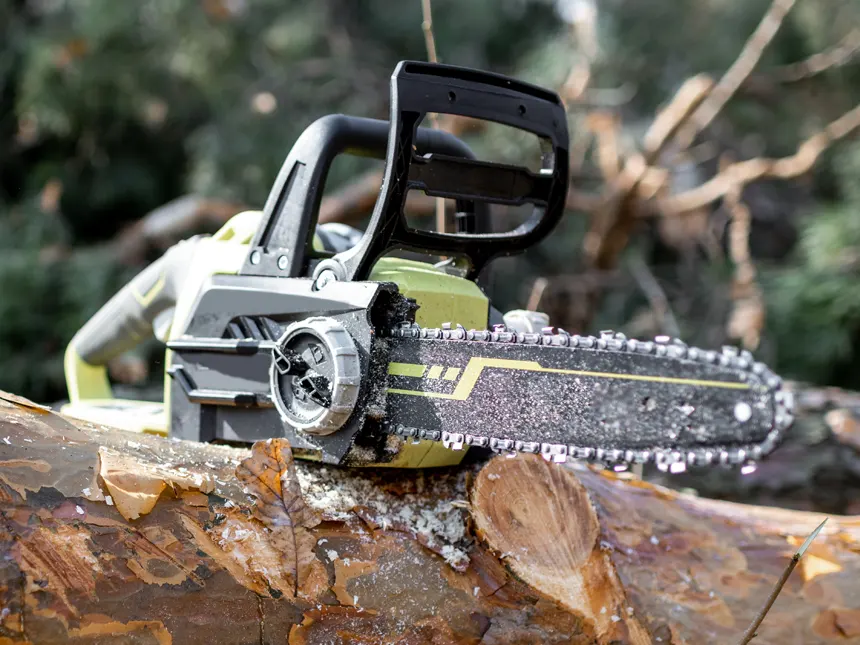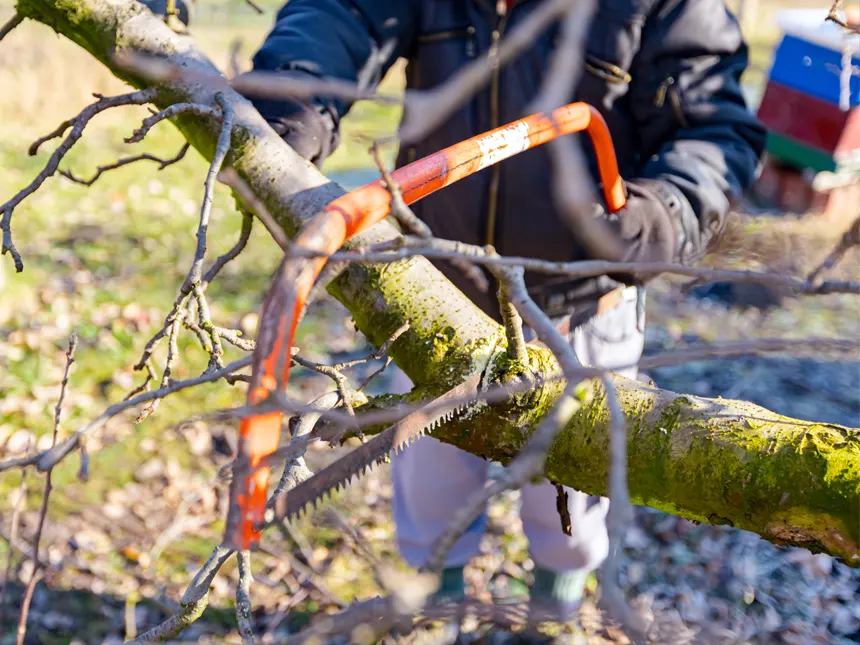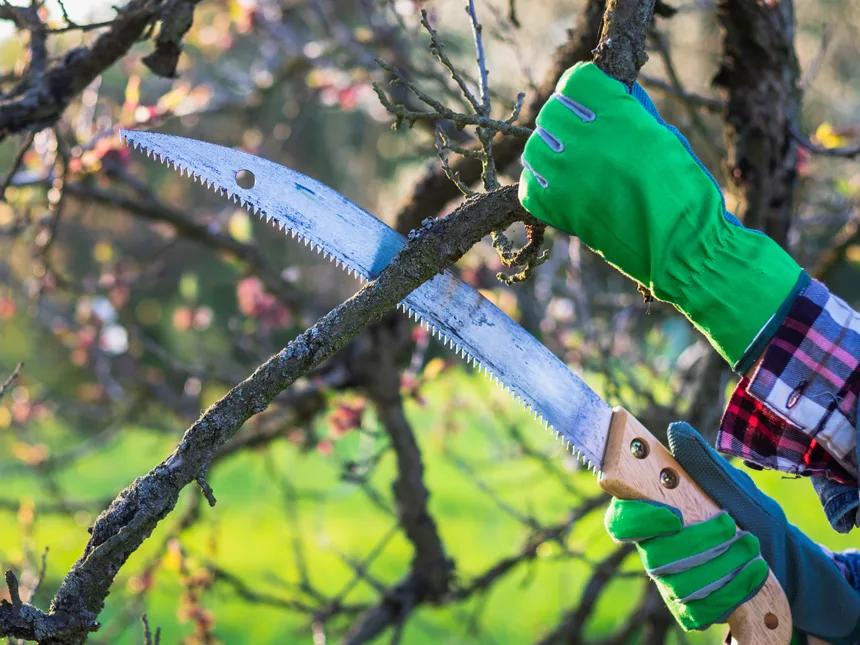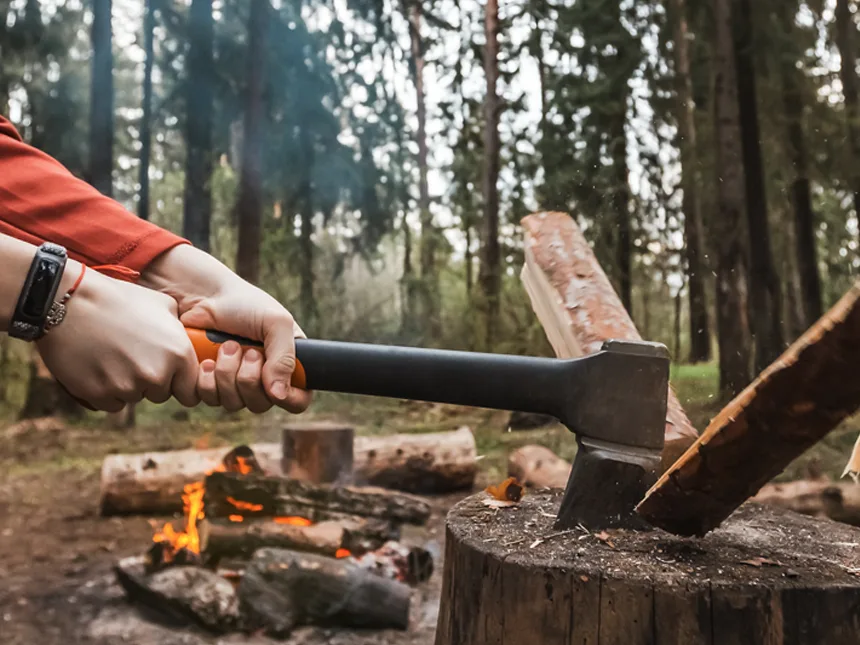The Main Parts of a Chainsaw
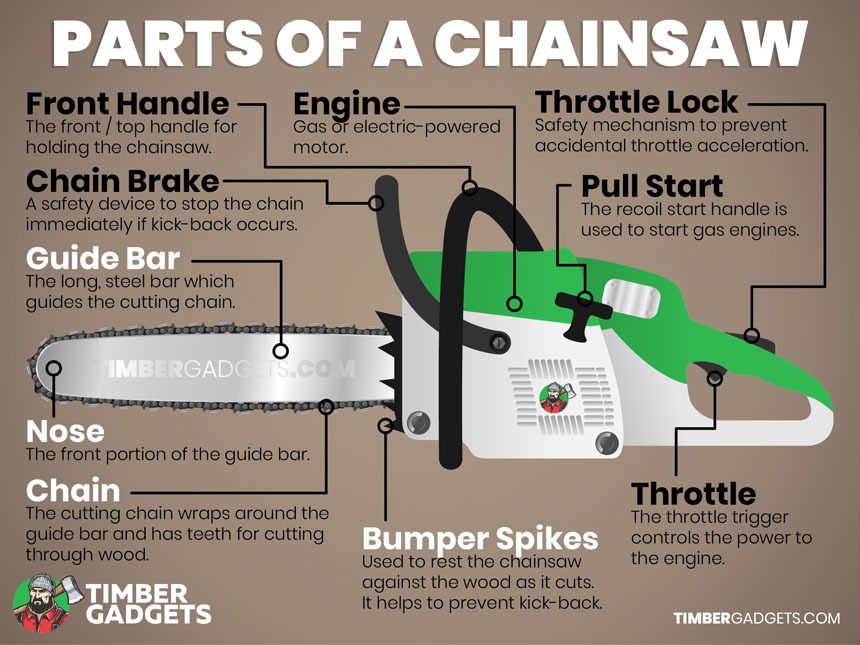
Timber Gadgets is reader-supported. We may earn a commission if you buy through the links on our site.
Whether you own a chainsaw or you’re about to purchase one, it’s a good idea to know about the main parts. Sure, the chain, engine, and handles need little description but it’s helpful to learn the location of a few other parts, too. That’s what this guide is for; to show you some of the main parts of a chainsaw.
It should go without saying but not all chainsaws are the same. For starters, there are gas and electric powered chainsaws. They serve the same purpose and operate in a similar fashion but their parts are different. Even among gas-powered chainsaws, each brand has their own design and its because of this reason not all chainsaws have the same parts in the exact same position. I said that in order to say this; not every part listed on this page is on every single chainsaw.
Also, I did not list all the parts of a chainsaw because that’s not needed and frankly, I don’t know what every single part does! Now that we’re on the same page, let’s take a look at a few of the main parts of a chainsaw. Please use the illustration above and refer to the parts listed below.
Table of Contents
The Main Parts of a Chainsaw
Each part listed below is meant to be used in conjunction with the illustration (picture) above. Unfortunately, due to poor planning and lack of room, I couldn’t add every part to the picture. Also, because the picture shows only one side, there are a few more parts I had to leave out. Either way, please excuse my illustration and work with me; not all the parts listed below are shown in the picture above.
Engine
Finding the engine is an easy task and doesn’t really need a marker but I’ve listed it here to remind everyone that nowadays, both gas and electric chainsaws are common. They both cut wood but don’t have all the same parts.
Pull Start
The pull start handle, also known as a recoil start handle, is typically located on the left side of the engine. These handles are found on gas-powered motors and they’re used to start the engine.
Front Handle
The front handle wraps around the front of the engine from the base to the top of the motor. It’s a comfortable grip meant for holding and handling the chainsaw.
Rear Handle
The rear handle is located on the back of the chainsaw. It’s where the throttle and throttle safety lock is located. One hand must be placed on the rear handle to operate the chainsaw.
Throttle
The throttle trigger is located on the underside of the rear handle. It regulates the RPM by increasing or decreasing the amount of fuel into the motor. The throttle trigger lockout must be engaged for the throttle to function.
Throttle Lock
The throttle lock is located on the top of the rear handle and its function is to help prevent the user from accidentally accelerating the throttle.
Chain Break / Hand Guard
Located on the front of the engine, above the guide bar, is an important part called a chain break or hand guard. This is a safety mechanism meant to stop the chainsaw in the event that kickback occurs.
Kickback happens most often when using the nose of the chainsaw to cut wood. The rotation of saw and cutting chain catch the wood in such a way that causes the nose of the chainsaw to shoot upwards, towards your upper body and head. The chain break helps to prevent serious injury by stopping the chain. Needless to say, you should never remove this device nor should you use a chainsaw that doesn’t have one.
Guide Bar
The guide bar is the long steel bar that guides the cutting chain. Hence the name; guide bar. It holds the chain in position. Guide bars have different sizes which determine the chain you use. Depending on the brand you have and its size, the length may vary between 16″ to 24″ or more.
Nose
The tip or front of the guide bar is known as the nose. It has a sprocket which is hard to see at first glance. Upon closer inspection, you’ll notice the chain is held in position by the sprocket.
Chain
The cutting chain runs along the guide bar. It is held into position on the guide bar and comes in many sizes. The pitch, gauge, and the number of links determine the chain you need for your chainsaw. Usually, you can find this information stamped on the side of the guide bar.
Chain Catcher
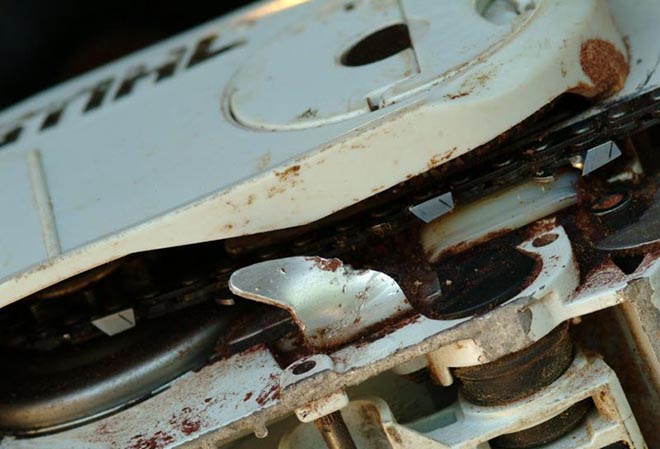
In the event your chain breaks, the chain catcher is meant to prevent the chain from being thrown back on the user. It is located under the guide bar towards the front of the engine.
Bumper Spikes
The bumper spikes are used to rest your chainsaw on the wood while cutting; it helps prevent kickback. Also, they’re sometimes called bucking spikes because they’re especially helpful when performing a buck cut.
Tensioner
You cannot see the tensioner in the illustration above because it’s typically located on the opposite side of the chainsaw. It controls the amount of tension or slack in the chain. In order to access the tension screw, you’ll likely need to loosen the clutch cover nuts first. Most chainsaws come with a scrench/combination wrench for this very purpose. Typically, when you turn the screw clockwise, it tightens the chain, removing the slack.
Decompression Valve
A decompression valve releases compression from the combustion chamber of the motor. This makes it easier to turn over using the recoil start handle. Again, this is another part that’s hard to show due to the angle of the picture above. The decompression valve is usually located on the top of the engine. It’s essentially a button you press before starting your chainsaw; it should close automatically once the motor is running.
Exhaust
The muffler is located on the front of the engine, just above the guide bar. Having this placement helps to keep the exhaust pointed away from the user.
Filter
The air filter is usually concealed under the air filter cover. It should be cleaned regularly to ensure proper air flow to the carburetor. You can usually find it by removing the top cover piece on the motor.
Choke
The choke may have a different position from brand to brand. However, its location is usually near the recoil start handle if using a gas-powered chainsaw. It works by adjusting the flow of air which affects the fuel-air mixture, helping you to get the motor running.
Primer Bulb
For chainsaws with a primer bulb, they’re often located just above or around the pull start handle. Simply pump the bulb to prime the engine with gasoline.
Differences in Parts
Like I’ve mentioned already, with the many different brands making chainsaws there are bound to be some differences. Whether its the location of the choke or not having a decompression valve, it’s important to remember this page and the picture above are not 100% accurate for every chainsaw. There is especially a difference when comparing a gas-powered chainsaw to an electric one. Keep in mind, safety is the most important part of using a chainsaw!
The intention of this page and illustration above is to teach you the basics. Use this guide as a simple introduction point and expand your personal knowledge in the parts of chainsaws as you see fit.

